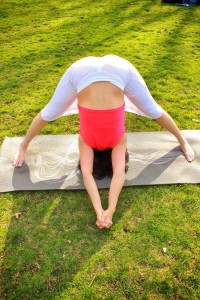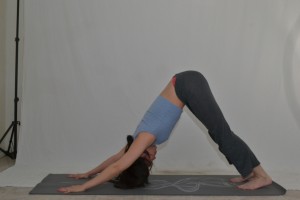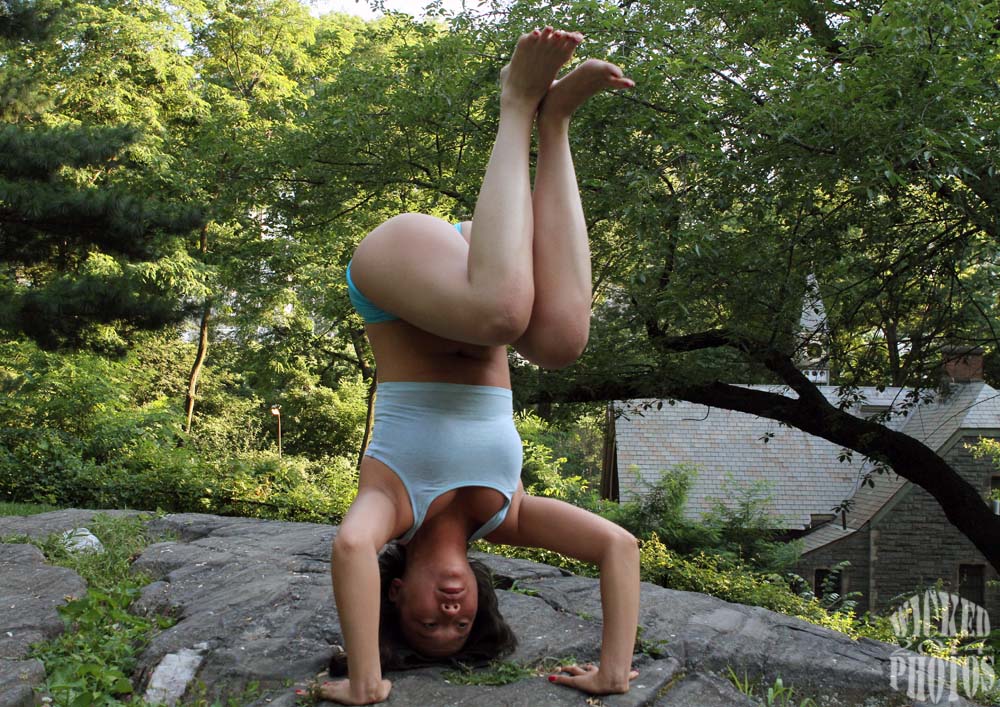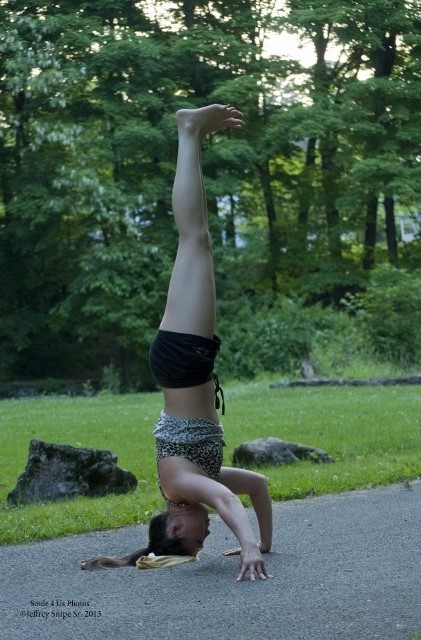Headstands can be intimidating at first.

Forward folds will help you get used to the idea of being upside down.
Once you get used to being upside down, it’s now just a matter of getting your body positioned so you can get your legs in the air.
So here are some tips:
- Usually we are taught to get into it from downward dog. Whether or not you are in headstand with your forearms on the ground or in tripod headstand with just your hands on the ground, you want your elbows to be no wider than your shoulders. An easy way to measure is to bend your elbows and grab the opposite elbows with your hands. That’s the width. Do not go wider than that. You will risk crunching into your shoulders. You want to gain your strength by pulling your shoulders away from your ears and push into your hands or forearms. If your forearms are on the ground, you want to feel as if you can lift your head off the ground.
- If you’re in tripod, make sure your arms are at a 90 degree angle and your elbows are shoulder-width apart.
- Bring your feet in until your hips are above your shoulders. That is where your stability will be. Lock that position in by keeping your tailbone tucked in and your mula bandha (pelvic muscles) engaged (squeeze them).

- Once that happens, I find the easiest way to get into it is to bend one leg into your body, lifting that foot off the ground, then the next. The reason this is easiest is because your center of gravity has little danger of shifting. If you’re doing tripod, you can rest your knees on your upper arms.
- Then, slowly raise your legs up. Engage your legs. I find the best way to do this is to flex your feet as if you’re standing on the ceiling. Keep your tailbone tucked! Engage your belly and your pelvic muscles! Stay focused on one spot somewhere.
- Don’t let stray thoughts into your mind.
- Practice, practice, practice!

Leave A Comment